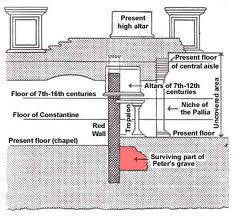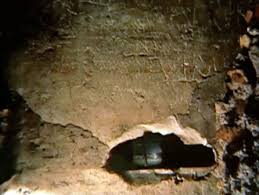One of the things we did in the afternoon before the gala dinner and tour of the Sistine Chapel was to visit the crypt where St. Peter is believed to have been buried. The entrance way to this underground grave yard or necropolis (which is largely an ancient pagan graveyard… but see my novel Roma Aeterna about the Christian parts of it) is on the outside of the far left side of St. Peter’s near the high altar. Here are some shots of that side of St. Peter’s (now nicely sandblasted) and the entrance door itself. Note as well the oldest chapel on the grounds nearby— the Chapel of St. Stephen Martyr.
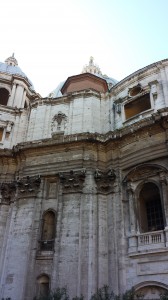 (Before sandblasting on that side of St. Peters)
(Before sandblasting on that side of St. Peters)
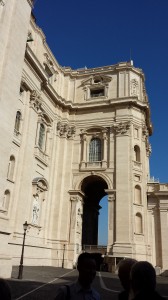 (after sandblasting)
(after sandblasting)
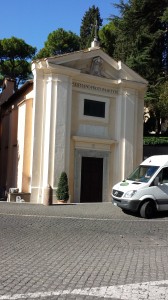 (chapel of St. Stephen).
(chapel of St. Stephen).
Here is the entrance way to the St. Peter scavi (i.e. ruins)
 The Italian above the door frame reads ‘Office of Ruins’. I know plenty of churches that are in ruins but this has got to be the only one that has an office of ruins!
The Italian above the door frame reads ‘Office of Ruins’. I know plenty of churches that are in ruins but this has got to be the only one that has an office of ruins!
You are not allowed to take pictures down where St. Peter is buried, but there are some monuments from the upper level of the necropolis where pictures are allowed….
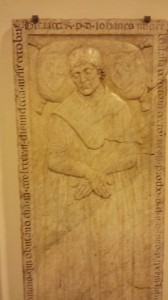
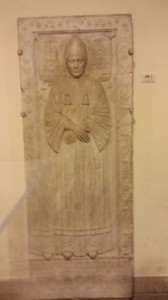
Here’s a pagan altar also found here. Bear in mind this was a general burial ground, mostly populated by pagans until folk like Peter were buried here. Then it increasingly became a Christian burial spot.
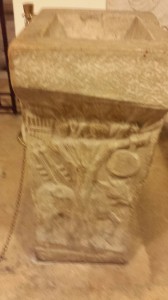
There is a model of the tomb of St. Peter we were allowed to photograph. What it shows is that the tomb was added to over time, with marble columns added, and that the bones of St. Peter were even moved to a secondary location on the back of the mausoleum itself.
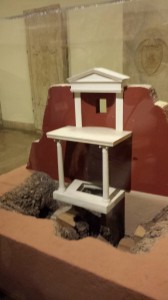
The two photos below were taken off the net… here is a schematic of the tomb…
This last picture is of where the bones were moved to. Note the graffiti identifying what is within. This is actually on the backside of the same tomb or mausoleum.
What will be surprising to some is that St. Peter was buried in or near a mausoleum which has am emblem of Sol Invictus on the ceiling.
This was of course originally an image of Apollos and his chariot riding across the sky. It came to be an early image of Christ as the risen one ascending into heaven. This picture was also taken off the net.


